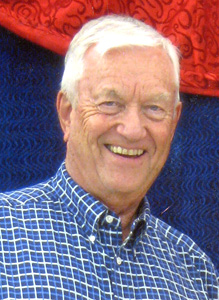- La Feria Community Holds Succesful Business Mixer Event
- Little Nashville to Take Place in Downtown Mercedes
- Lions Basketball Captures District Gold
- La Feria ISD Students Compete in Regional Chess Tournament
- Lions End First Half of 32-4A on a High Note
- La Feria ISD Held Another Successful Parent Conference
- Strong Appearance for Lions at Hidalgo Power Meet
- LFECHS Students Get to Meet Local Actress
- Students Participate in Marine Biology Camp
- Two LFECHS Students Qualify for All-State Band
The 2017 Hurricane Outlook
- Updated: June 9, 2017
“Will we miss the bullet again?”

Chief Valley Television Meteorologists; Robert Bettes, KVEO; Bryan Hale, KGBT; Tim Smith, KRGV. Photos: Bill Keltner/LFN
The Brownsville office of the National Weather Service joined with Television Station KGBT TV to present the 4th Annual Media Partners Hurricane Workshop just as all eyes turn to the Atlantic and Caribbean for an indication of what to expect this year. The answer given by Joshua Schroeder, NWS/NOAA Science and Operations Officer, is that we need to pay more than the usual attention this season, as we may have a more active tropical storm season in the making.
KGBT TV Chief meteorologist, Bryan Hale, welcomed the members of the Valley media that came to learn what to expect this 2017 Atlantic Season Hurricane season. The news and weather staffs from KGBT TV, KRGV TV, KVEO TV, CHANNEL 7 Matamoros and several newspapers were present. After recognizing the media, Meteorologist Hale introduced the NWS/NOAA guest speaker.
Schroeder began his seminar with a special “live” audio presentation by the National Oceanic and Atmospheric Administration. The NOAA is predicting the season beginning this month and running through November will produce 11 to 17 named storms, 5 to 9 hurricanes and 2 to 4 major hurricanes, Schroeder said the prediction of an elevated season is based on the projection that the “”El nino” effecting the North Atlantic has diminished. There is also an opposite factor called “La Nina” that could begin to affect the same area. He continued, “then, add to that, water temperatures in the Gulf and Caribbean warmer than normal in those hurricane-forming areas, and you have the ingredients for a lively tropical storm season.”
The speaker made an interesting comment, saying: “Hurricanes don’t begin in the Gulf of Mexico because of the warm waters, rather, when a tropical systems moves into the Gulf from the Caribbean or crosses Florida from the Atlantic, the hot Gulf water quickly strengthens it.”
“ It’s been seven years since the Gulf has experienced a hurricane landfall,” he said, “so pay attention to the enhanced, advanced warning devices now available this year. He said, “most of the damage from hurricanes is not just the high winds, but the storm surge, flooding and tornados spawned by the hurricane.”
NOAA now has more precise products to aid in forecasting the track of a storm. They will now have better, specific information about (1)Storm Surge forecasting–a storm surge of 3-feet can be life-threatening, (2)Hurricane force wind predicting as the storm heads for landfall. (3) and Rainfall flooding predictions.
The weather information from the National Hurricane Center is designed to help people in the target zone to make better decisions–whether to leave when ordered, or prepare to stay, and what supplies to have on hand if the decision is to stay or evacuate.”
The National Hurricane Center will release one of two messages for the affected areas–the message could change as the storm approaches: (1) A “Watch” indicating that a hurricane is possible within 48 hours, or (2) a “Warning” that a tropical storm is expected within 36–Make your decision NOW!
Remember: During the peak of the high winds and storm surge, emergency responders may not be able to reach you, and that storm category is unrelated to the danger from the storm.
Your best friend in a major storm will always be a battery-powered radio, capable of tuning into the weather station frequency in your area, because power will probably fail when you need it most.
Finally, Weather conditions and forecasts can change. Always heed the advice or orders of your local elected officials.





